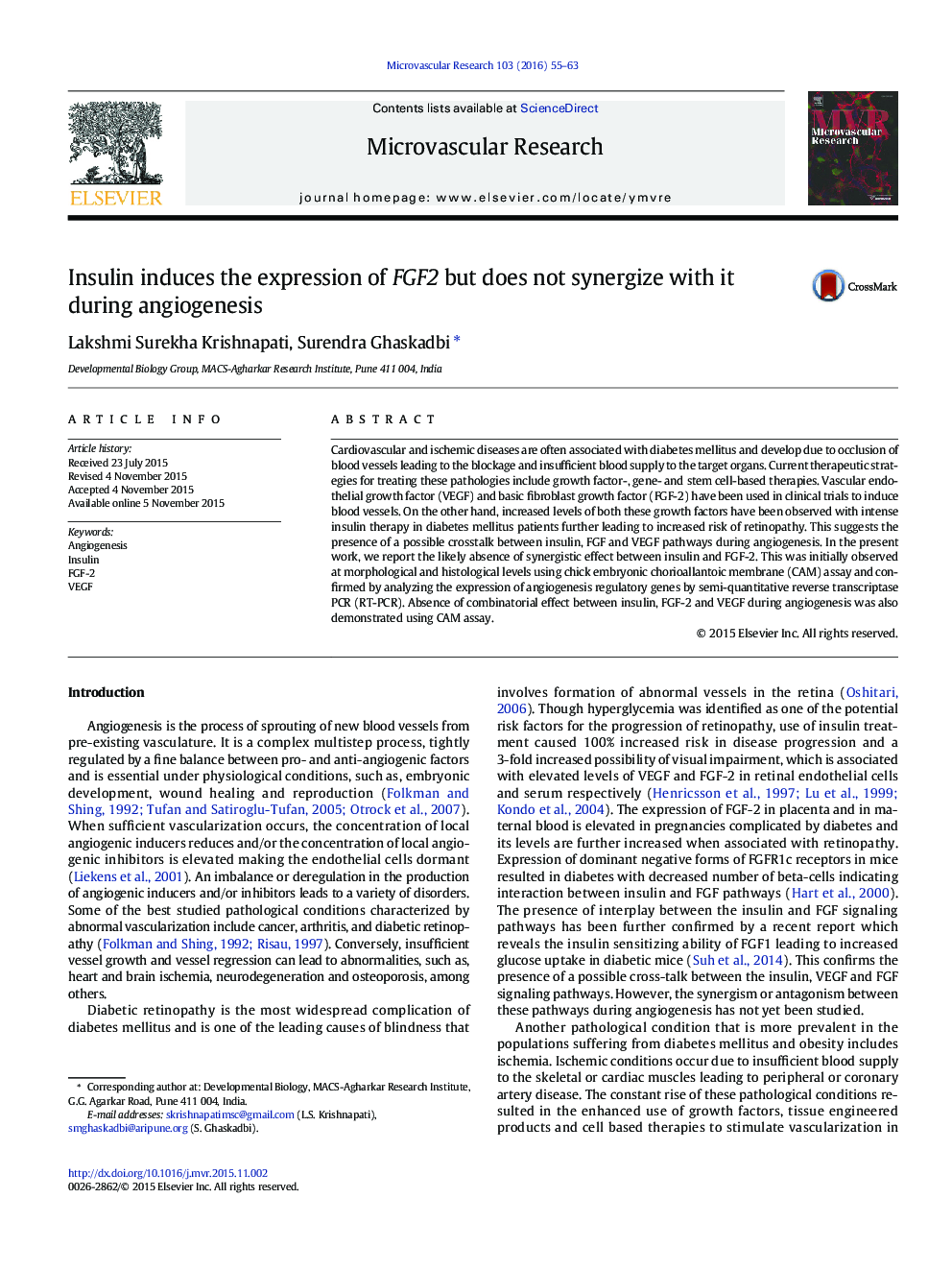| Article ID | Journal | Published Year | Pages | File Type |
|---|---|---|---|---|
| 1994669 | Microvascular Research | 2016 | 9 Pages |
•CAM assay was used to study interplay between growth factors during angiogenesis.•Insulin, FGF-2 and VEGF promoted angiogenesis individually.•No direct synergism between growth factors was observed.
Cardiovascular and ischemic diseases are often associated with diabetes mellitus and develop due to occlusion of blood vessels leading to the blockage and insufficient blood supply to the target organs. Current therapeutic strategies for treating these pathologies include growth factor-, gene- and stem cell-based therapies. Vascular endothelial growth factor (VEGF) and basic fibroblast growth factor (FGF-2) have been used in clinical trials to induce blood vessels. On the other hand, increased levels of both these growth factors have been observed with intense insulin therapy in diabetes mellitus patients further leading to increased risk of retinopathy. This suggests the presence of a possible crosstalk between insulin, FGF and VEGF pathways during angiogenesis. In the present work, we report the likely absence of synergistic effect between insulin and FGF-2. This was initially observed at morphological and histological levels using chick embryonic chorioallantoic membrane (CAM) assay and confirmed by analyzing the expression of angiogenesis regulatory genes by semi-quantitative reverse transcriptase PCR (RT-PCR). Absence of combinatorial effect between insulin, FGF-2 and VEGF during angiogenesis was also demonstrated using CAM assay.
